Health Care > STUDY GUIDE > NSG 6021 PATHOPHYSIOLOGY FINAL EXAM STUDY GUIDE/Guaranteed A+ Guide (All)
NSG 6021 PATHOPHYSIOLOGY FINAL EXAM STUDY GUIDE/Guaranteed A+ Guide
Document Content and Description Below
Pathophysiology Final Study Guide Patho Section 1 Cell & Tissue Function/Dysfunction Atrophy: decrease in size of cells. Hypertrophy: increase in cell size. Hyperplasia: increase in number of cel... ls. Metaplasia: mature cell type is replaced by a different mature cell type. Dysplasia: cells vary in size & shape within a tissue. Anaplasia: undifferentiated cells with variable nuclear & cell structure. Neoplasm: tumor. Cell Damage Ischemia: oxygen deficit due to respiratory or circulatory problems. Hypoxia: reduced oxygen in tissue. Oxygen Deficit: decreased energy production, loss of Na pump ↑ intracellular Na. Temperature: inactivation of some enzymes, damages organelles, protein coagulation, disruption of cell membrane. Micro-organisms Abnormal Metabolites: caused by genetic disorders or altered metabolism. Nutritional Deficits Cell Death Apoptosis:programmed cell death controlled by genetics. Necrosis:lysis of a cell, cell components leak into blood. Liquification:dead cells liquefy due to release of enzymes. Coagulation:cell proteins are altered or denatured causing coagulation. Caseous:form of coagulation necrosis, thick, yellowish, cheesy. Fat: fatty tissue is broken down into fatty acids. Tissue Damage from Chemicals Exogenous: from environment. Endogenous: from inside the body, Tissue Damage from Physical Agents Hypothermia: vasoconstriction, ↑ blood viscosity, hypovolemic shock ↓ blood pressure. Hyperthermia: causes general vasodilatation, decrease in circulating blood volume. Radiation: primarily affects actively dividing cells Biological Agents Insects/Animals: direct injection of toxin, transmission of infectious agent, allergic reaction to insect proteins. Food Poisoning Normal Defenses of the Body 1st Line Defense Physical Barriers: unbroken skin, mucous membranes, nasal hair, clots. Fluids: may contain enzymes or chemicals:saliva, tears, gastric, sweat. 2nd Line Defense-non-specific Phagocytosis:neutrophils & macrophages engulf cells, debris, foreign mat. Inflammation: automatic response to cell injury. 3rd Line Defense-specific defense produced by Antibodies Cell Mediated Immunity Cellular Defenses Mast Cells: located in tissue & release histamine & bradykinin. Macrophages: monocytes that enter tissue & act as phagocytes. Interferons: small proteins made by lymphocytes to prevent virus replication. White Blood Cells Granulocytes Neutrophils: work by phagocytosis. Basophils: release histamine leading to inflammation. Eosinophils:combat the effects of histamine. Agranulocytes Monocytes:can enter tissue to become macrophages which function as phagocyte. Lymphocytes: B & T Acute Inflammation Vascular Response: vasodilatation & increased capillary permeability. Cellular Response: migration of inflammatory cells through chemotaxis to injury site to destroy ineffective organism, remove damaged cells, released inflammation mediators. Exudate Serous: watery, mostly fluids, some proteins and WBC’s. Fibrinous: thick, sticky, high fibrin content. Purulent: thick, yellow-green, contains leukocytes, cell debris & microorganisms. Abscess: Pocket of purulent exudates or pus in a solid tissue. Local Effects of Inflammation-Cardinal Signs of Inflammation Redness & Warmth: due to increased blood flow to area. Swelling: shift of protein & fluid into interstitial space. Pain: pressure on free nerve endings, chemical mediators irritate nerves. Loss of Function: edema may restrict movement. Systemic Effects of Inflammation Mild Fever: due to resetting of hypothalamic thermoregulatory set point, release of endogenous pyrogens. Malaise Fatigue Headache Anorexia Treatment of Inflammation: drugs may decrease capillary permeability, reduce number of leukocytes & mast cells. Types of Healing Resolution: minimal tissue damage, cells can repair themselves. Regeneration: damaged tissue is replaced by identical tissue. Replacement: functional tissue replaced by scar or fibrous tissue. 1st Intention: wound is clean, edges are close together with minimal gap. 2nd Intention: large break in tissue, longer healing process with more scar tissue. Scar Formation: fibroblasts proliferate, abnormal amount of collagen. Hypertrophic: overgrowth of fibrous tissue, keloid. Ulceration: blood supply around scar is impaired resulting in tissue breakdown. Wound Staging 1. Partial thickness ulcer-red or pink ie. Sunburn. 2. Partial thickness ulcer-blister, scrape, abrasion. 3. Full thickness ulcer- through dermis. 4. Full thickness ulcer that includes muscle or bone. Drainage Transudate: clear & watery. Serosanginous: clear w/ tinge of red/brown. Contains serum/blood thin & watery. Exudate: creamy yellowish. Contains proteins & WBC’s Thick. Purulent: yellowish. Contains leukocytes and necrotic debris, thick. Infected Pus: hues of yellow, green or blue. Contains pathogens, thick. Venous Insufficiency Clinical Presentation Incompetent Valves medial leg area Inefficient Calf Pump edema Distended Capillary Bed wet wound Decreased Fibrolysis scaring, red base Fibrin Leakage hemosiderin deposits(purple/brown on leg) Trauma Ulcer Documentation of Pulses Normal: 2+ Diminished: 1+ Absent: 0 Arterial Insufficiency: decreased arterial blood supply. Acute(thrombosis) vs Chronic(arteriosclerosis) Characteristics Dry Gangrene: nonviable dry tissue. Wet Gangrene: tissue necrosis + bacterial infection. Drainage w/ odor. Black Gangrene: gangrenous borders, mummified skin. Pain w/ walking=Claudication Skin is atrophic(no hair) slow nail growth & Diminished Pulse Ankle Pressure Index: SBP LE/SBP UE >1 no arterial occlusive disease .9-1 min sx in LE .5-.9 claudication pain(leg pain w/ walking) .3-.5 ischemic rest pain <.3 ischemic w/ tissue necrosis Assessment of arterial flow, skin color w/ elevation/dependency 1. LE Elevation to 60º for 1 minute. Normal=no color change. 2. Lower the LE & record time for color to return.>30seconds means arterial insufficiency. Will look hyperemic(bright red). Immune Response-Third Body Defense Humeral Immunity: antibodies are produced to protect body & stored in blood. Cell Mediated Immunity:lymphocytes are programmed to attack non-self cells. Antigens:immunogens, proteins, polysaccharides, glycoproteins on cell surface. Cells Macrophages:present throughout the body, derived from monocytes, initiate immune response, engulf foreign materialprocess & display foreign antigens & present them to lymphocytes, secrete monokines & interleukins . Lymphocytes:primary cell in immune response, T: has 3 subgroups made in bone marrow & differentiate in thymus, cell mediated immunity, can target certain cells. 1.Cytotoxic T:cells destroy cells bind to antigen & release enzymes 2.Helper T: facilitate immune response by activating & regulating 3.Memory T: remember antigens. B:Made in bone marrow, located in spleen & lymphoid tissue, produce antibodies. Natural Killer:kill tumor or virus infected cells w/o prior exposure Antibodies IgG:most common, can activate compliment, cross placenta, primary & secondary immune response. IgM:can activate compliment, natural antibodies ie. Involved in blood type IgA:not in blood, is in tears, saliva & colostrums. IgE IgD Compliment System:antigen-antibody complex, activated during immune rxn w/ IgG or IgM. Causes cell damage when activated, causes macrophages to release enzymes. Immune Response Primary: 1st exposure to antigen, 1-2 weeks needed for effective antibodies Secondary:repeat exposure to same antigen, effective response in 1-3 days Immunity: Innate-always present. Or acquired. Hypersensitivity Reactions Type 1 Hypersensitivity:allergic rxn, exposed to allergen causes development of IgE’s,activate mast cells and causes inflammation. Ie. Hay fever, allergies, asthma Type 2 Hypersensitivity:cytotoxic hypersensitivity. Antigen on cell membrane reacts w/ circulating IgG’s, activates compliment, cells w/ antigen destroyed. Ie incompatible blood type exposure. Type 3: Immune complex hypersensitivity-antigen & antibody combine forming immune complexes that cause inflammation & tissue destruction. Type 4:Cell Mediated or delayed response by T-lymphocytes. No antibodies present. Ie. Tb test, contact dermatitis. Immune System Malfunction Hypersensitivity: full system immune response to non-noxious stimulus. Asthma: central windpipe or airway disorder. [Show More]
Last updated: 2 years ago
Preview 1 out of 41 pages
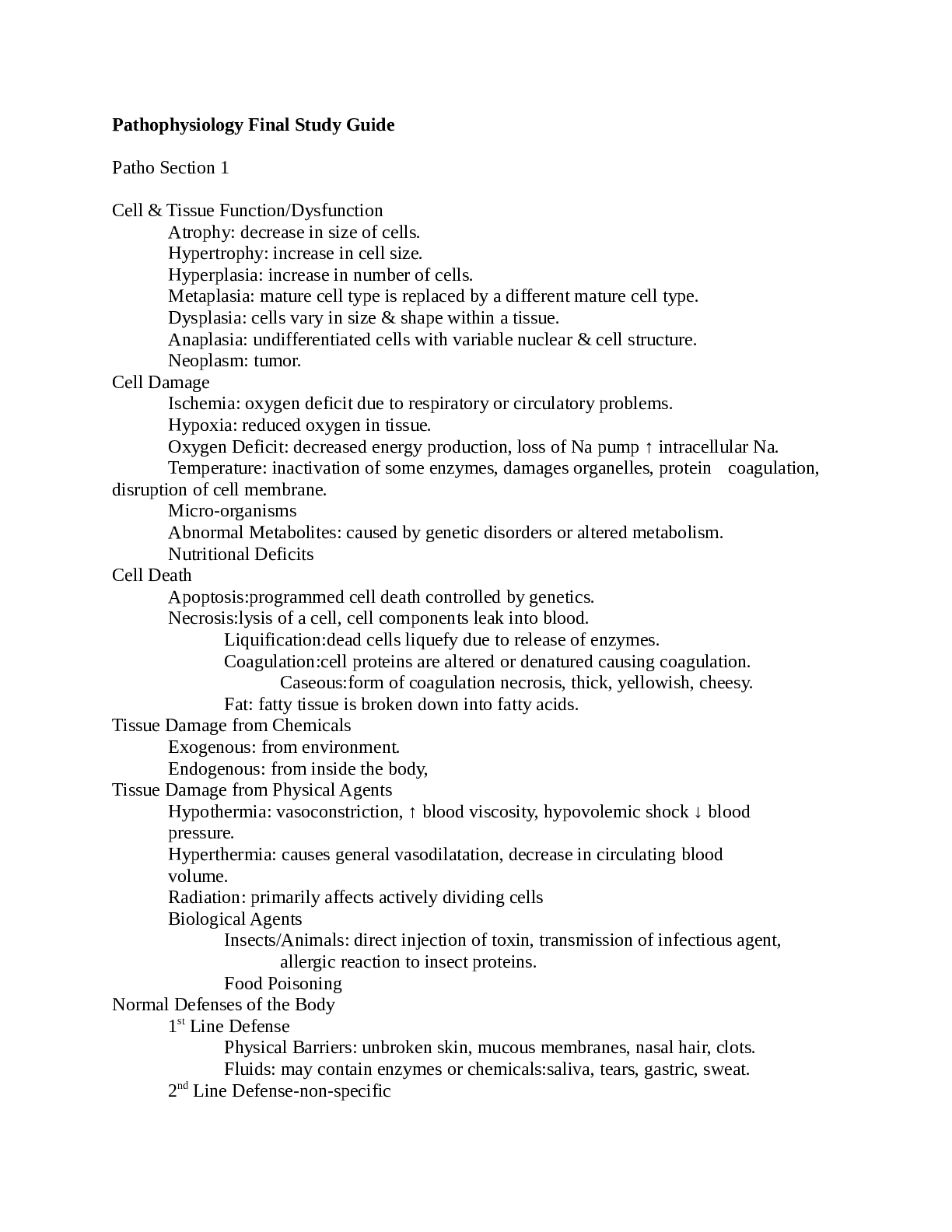
Buy this document to get the full access instantly
Instant Download Access after purchase
Buy NowInstant download
We Accept:

Reviews( 0 )
$9.00
Can't find what you want? Try our AI powered Search
Document information
Connected school, study & course
About the document
Uploaded On
Aug 11, 2022
Number of pages
41
Written in
Additional information
This document has been written for:
Uploaded
Aug 11, 2022
Downloads
0
Views
102

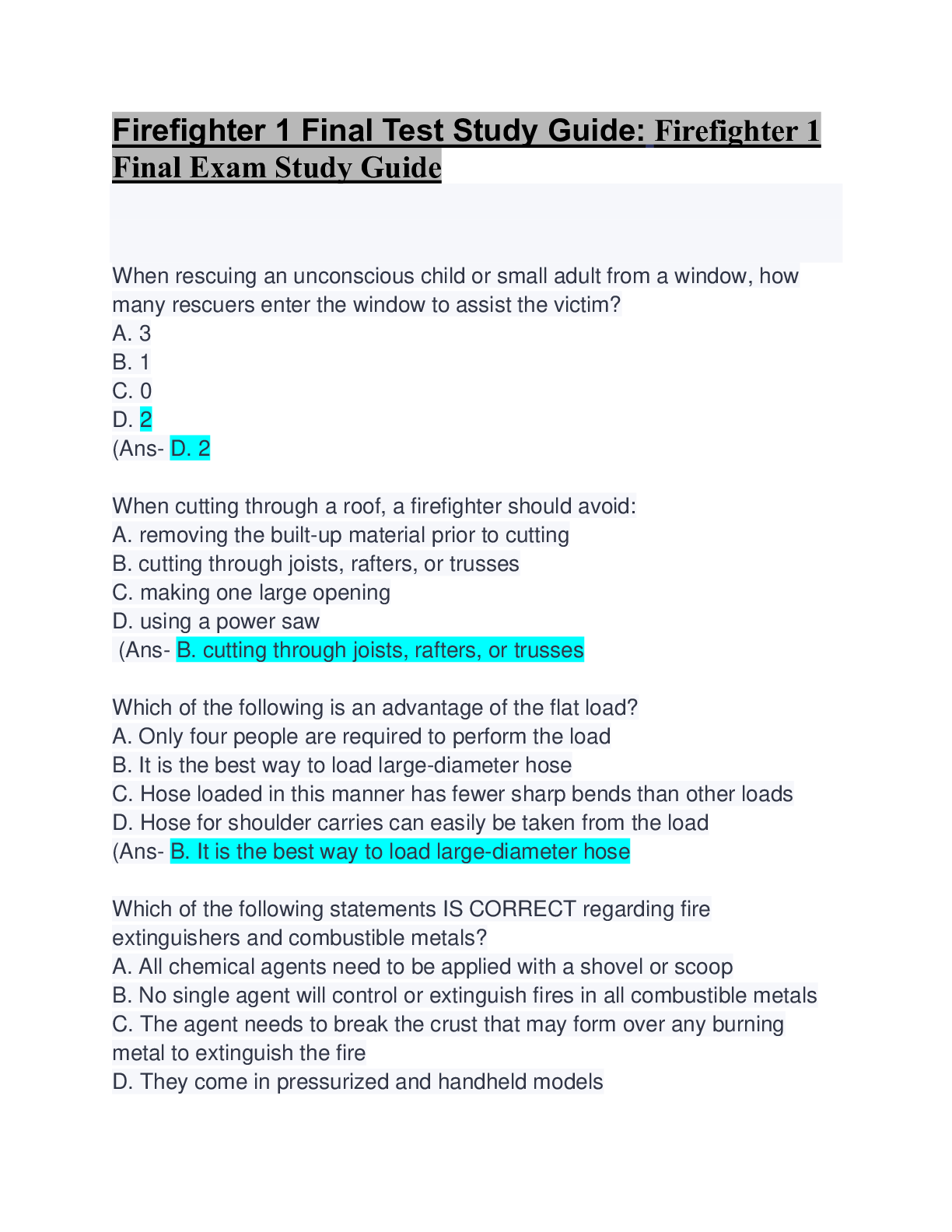
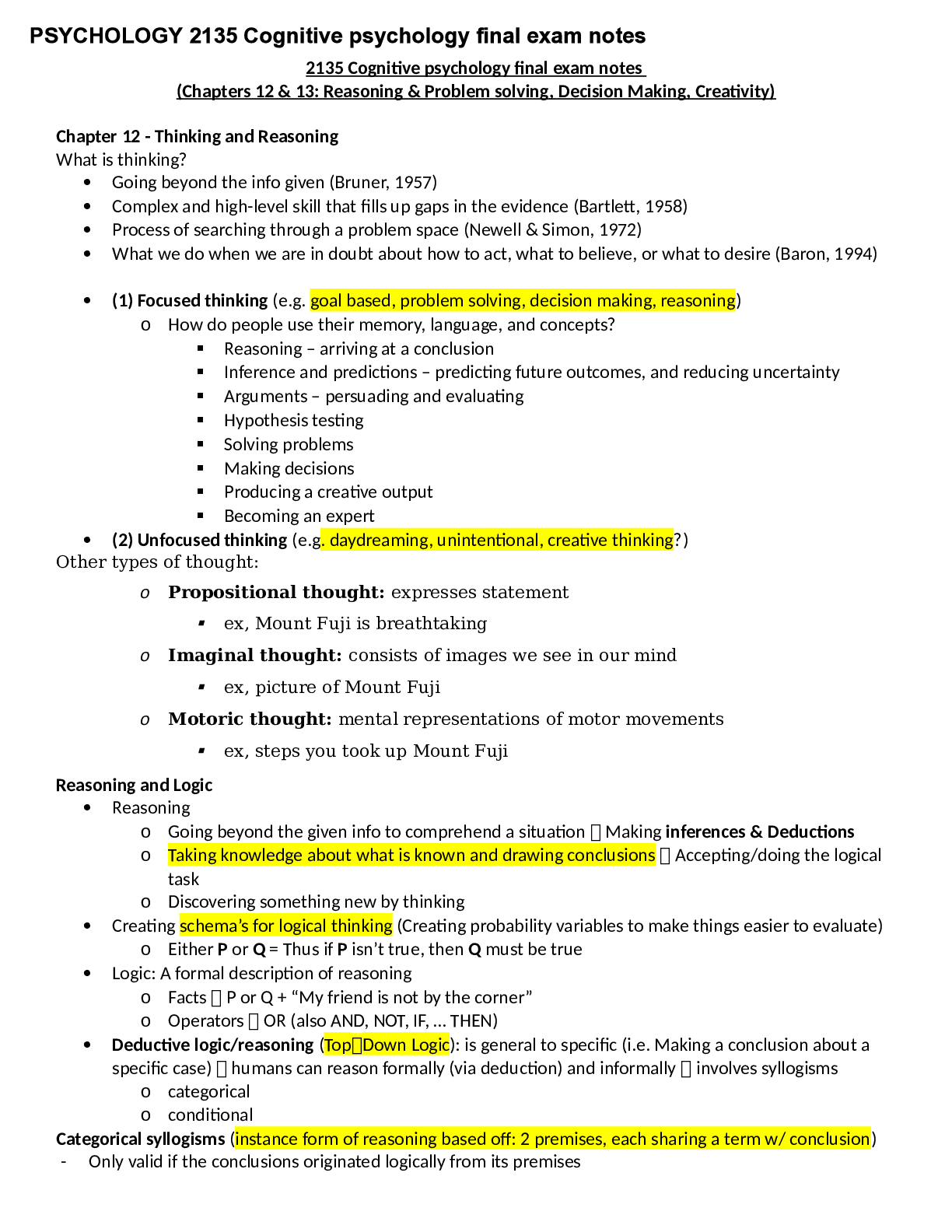
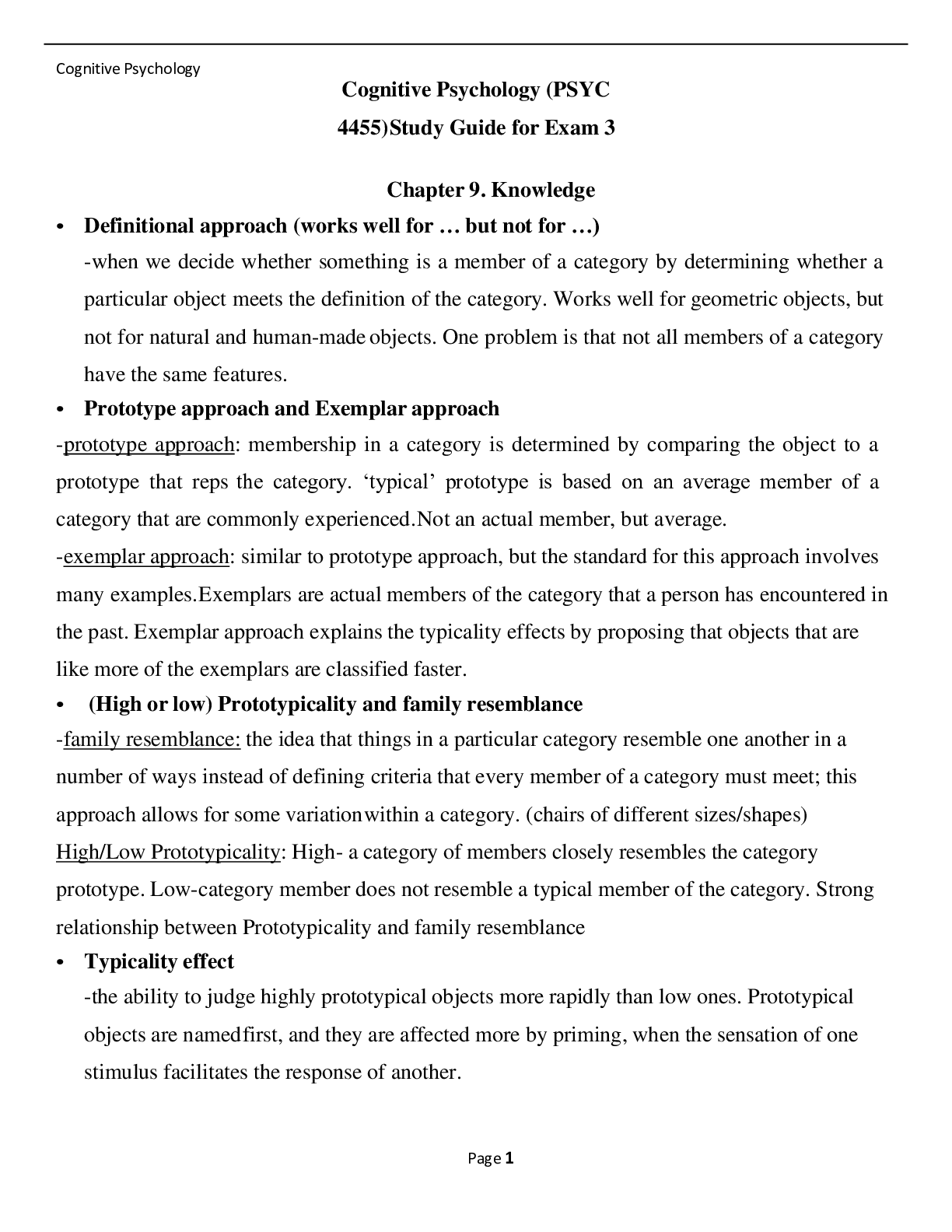
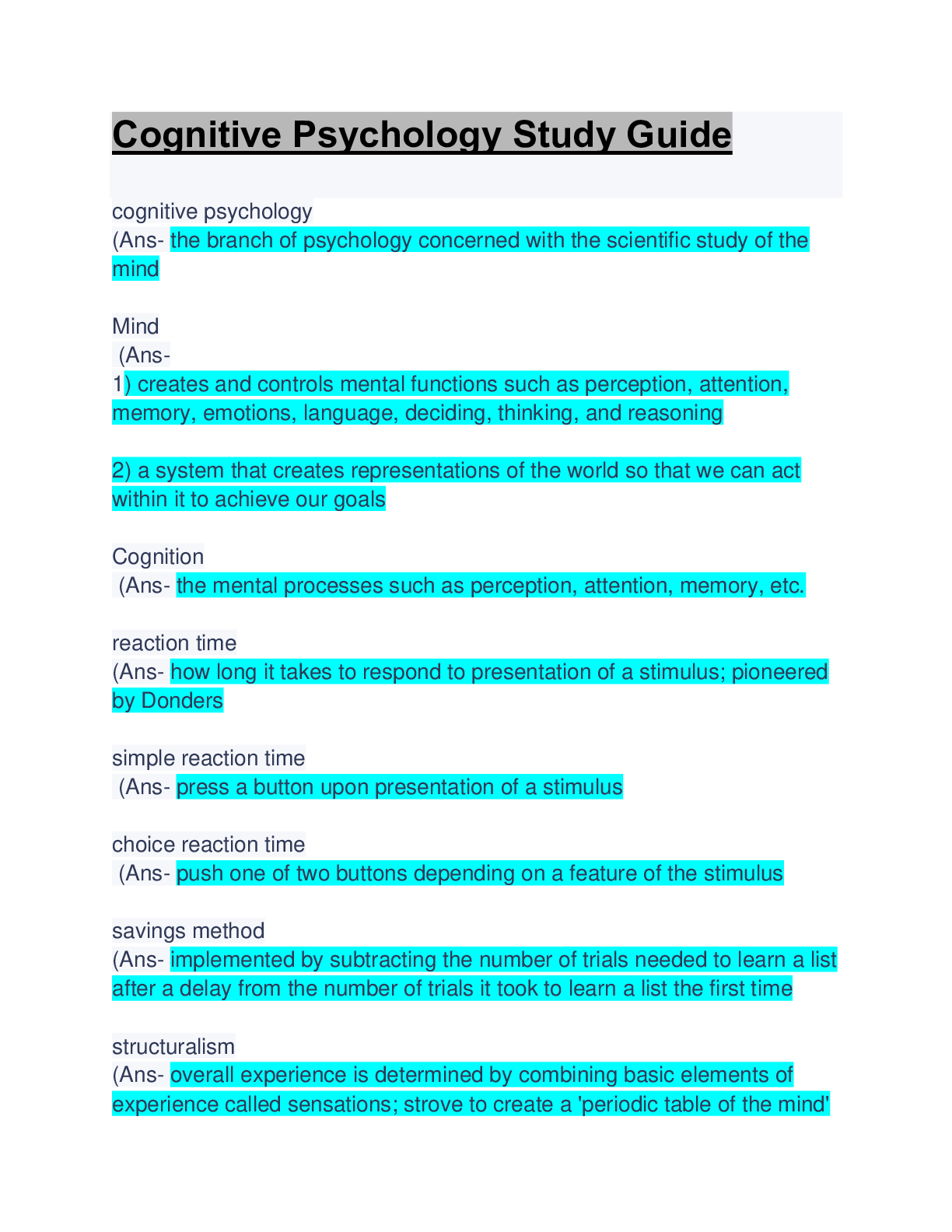
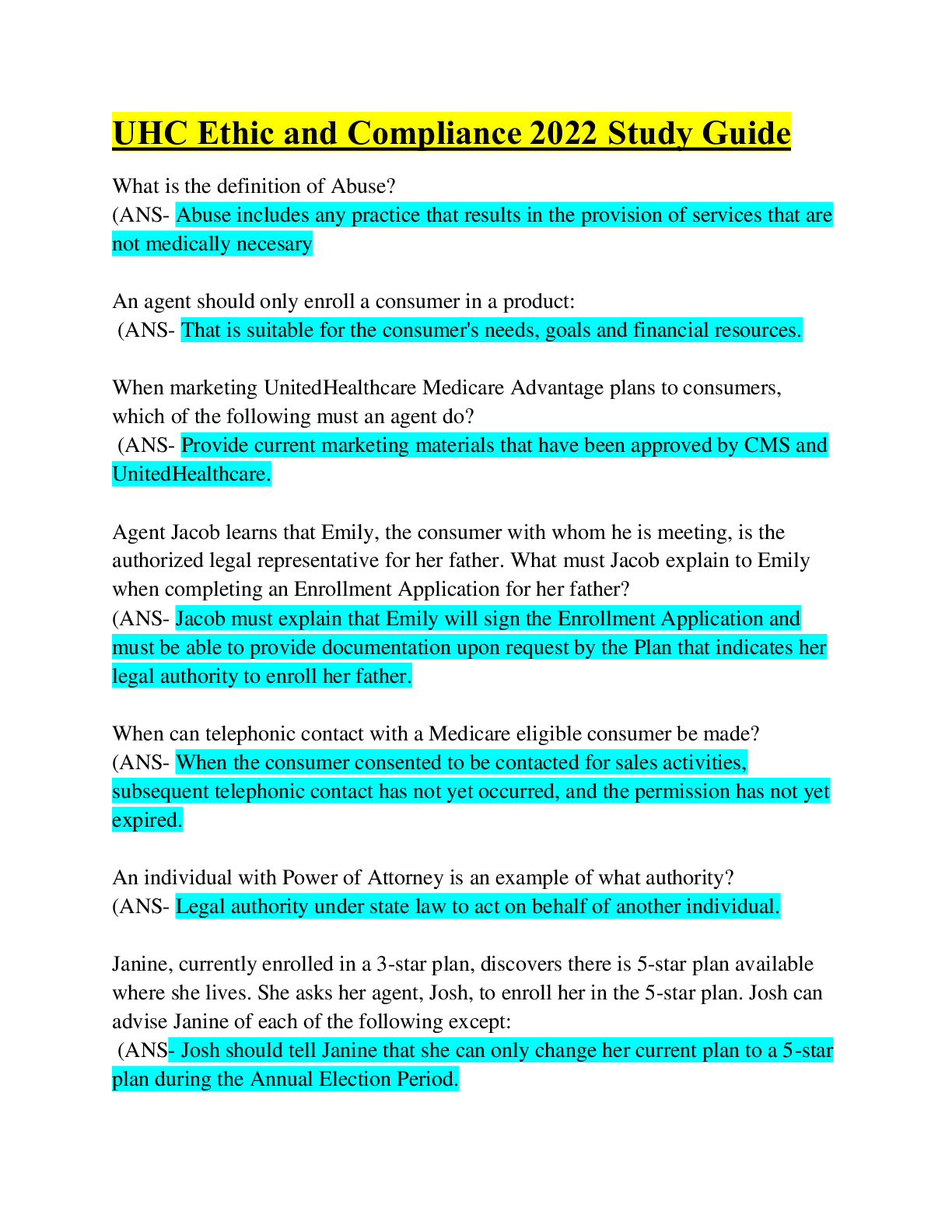
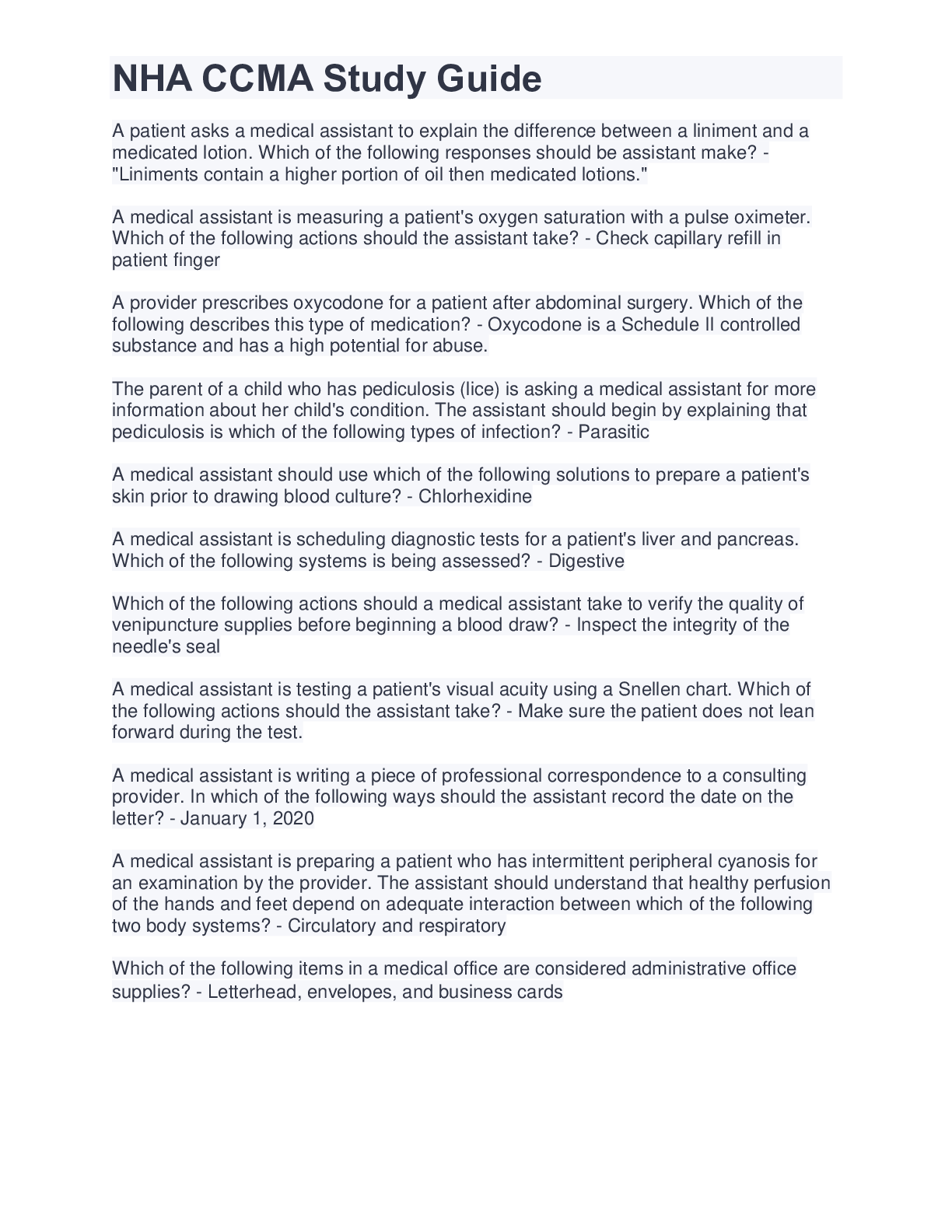


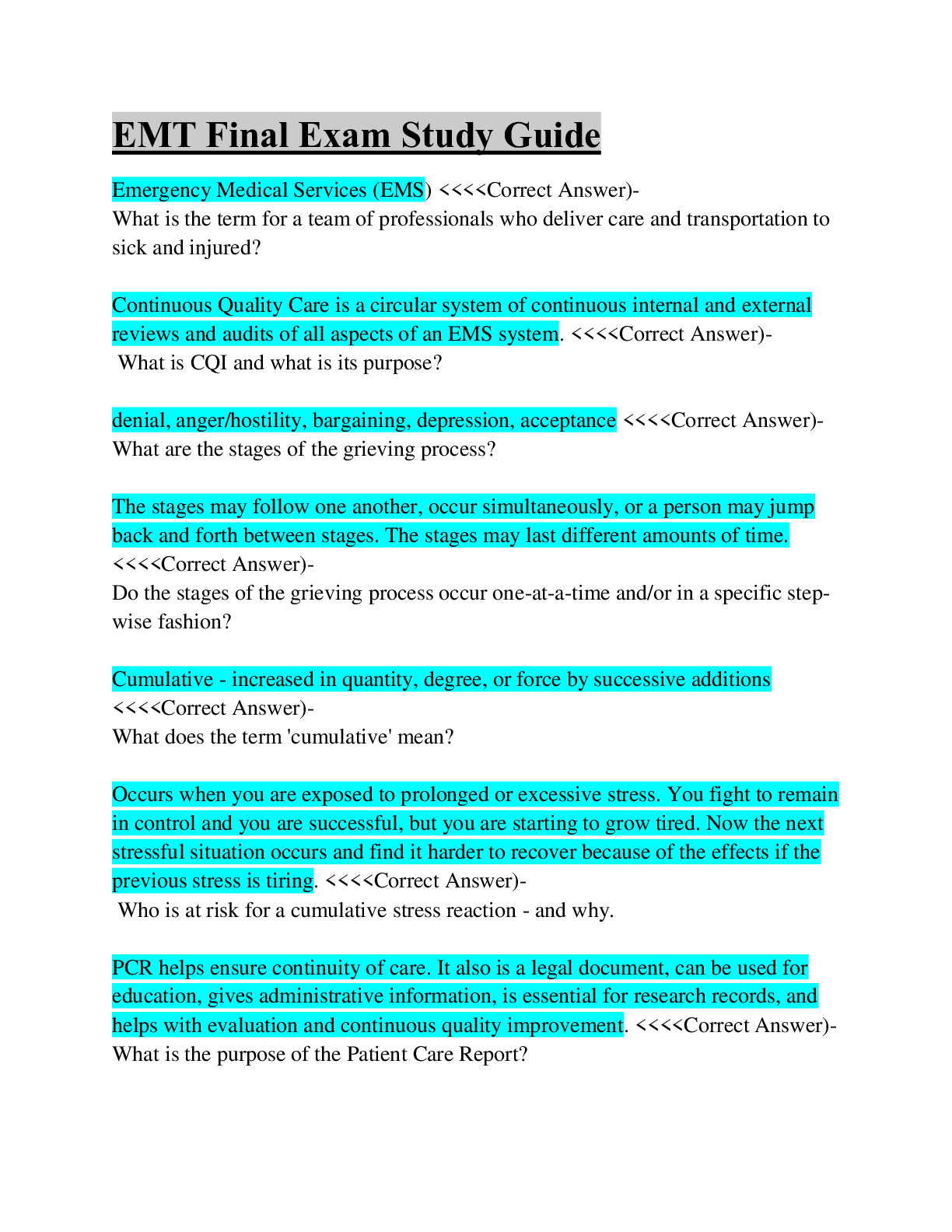
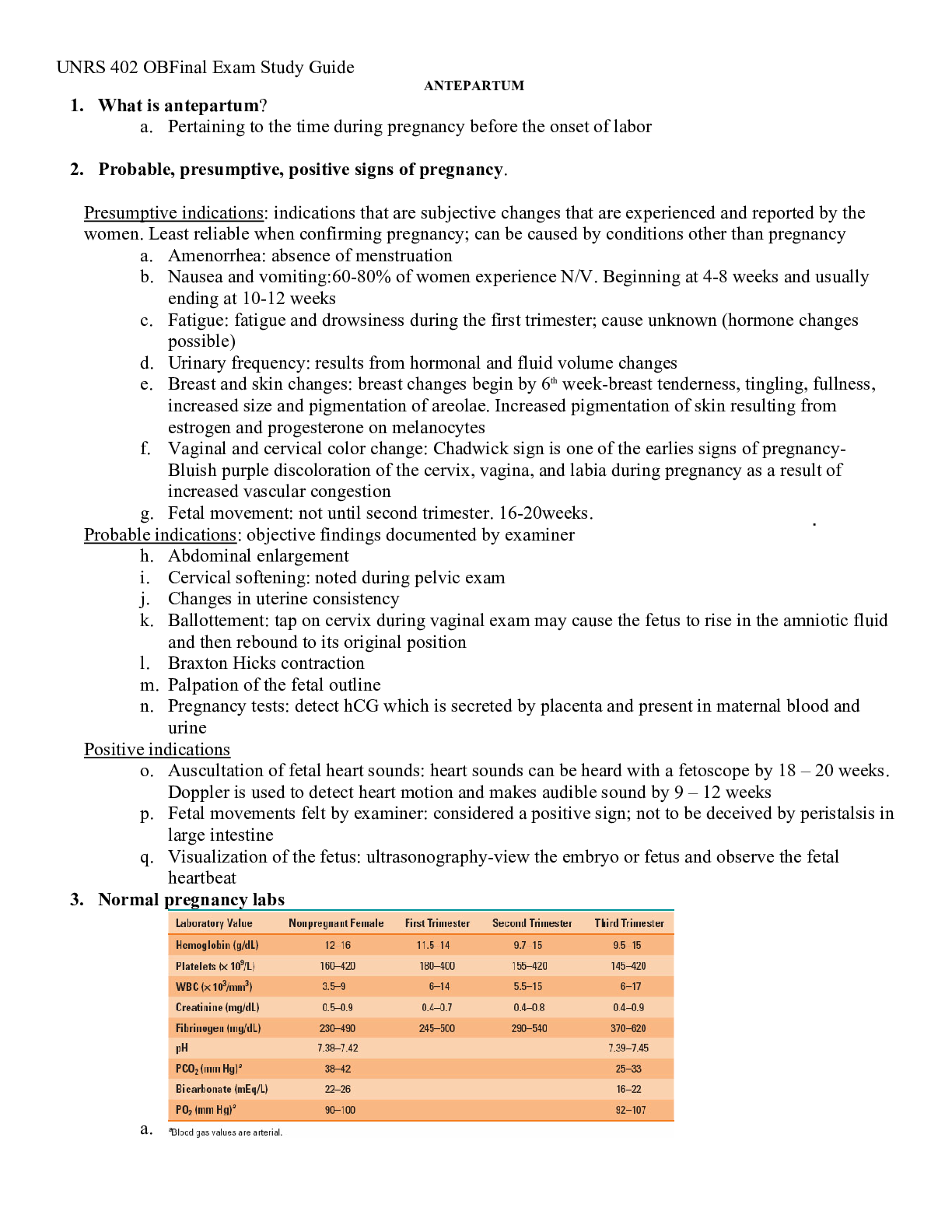

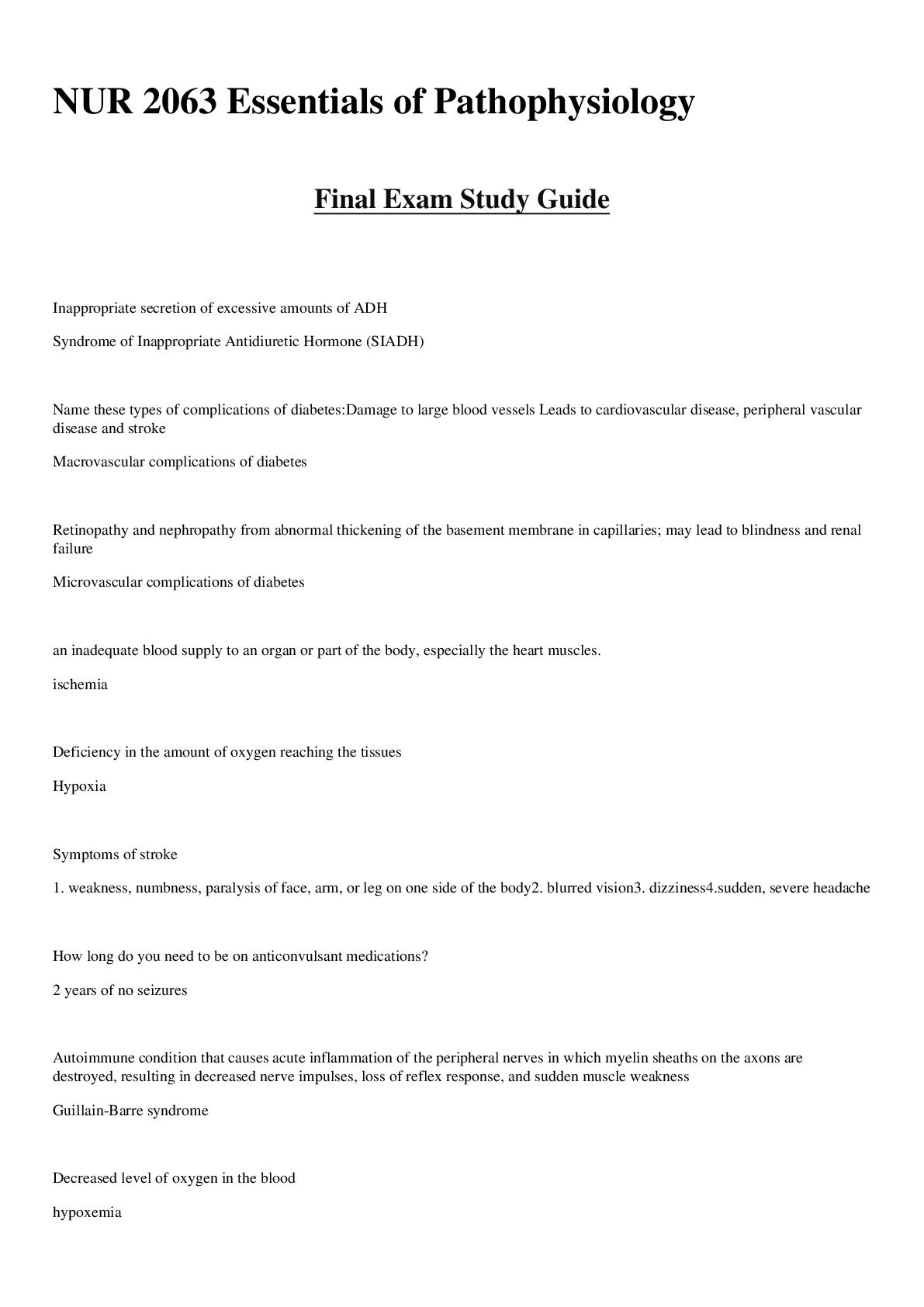
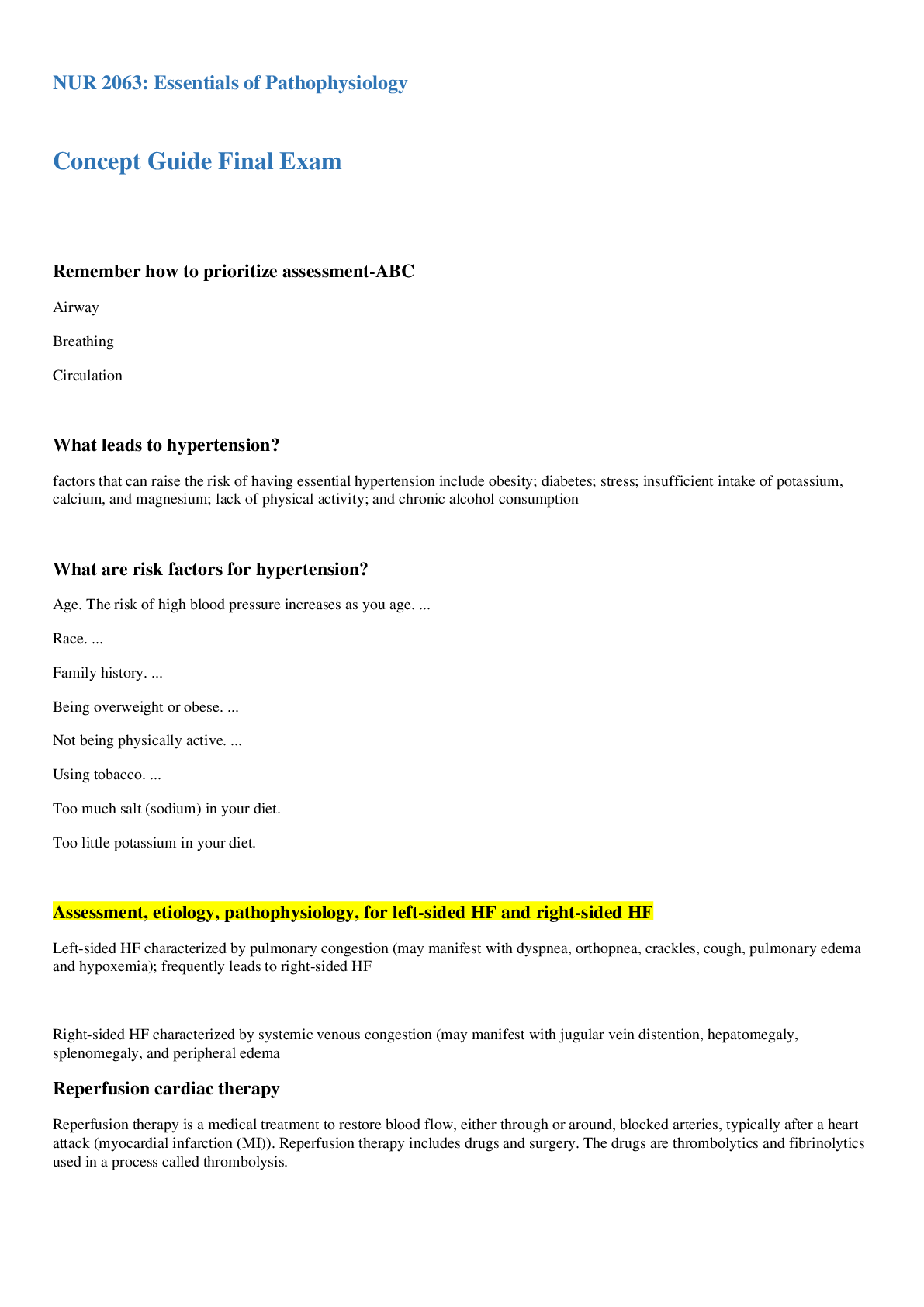
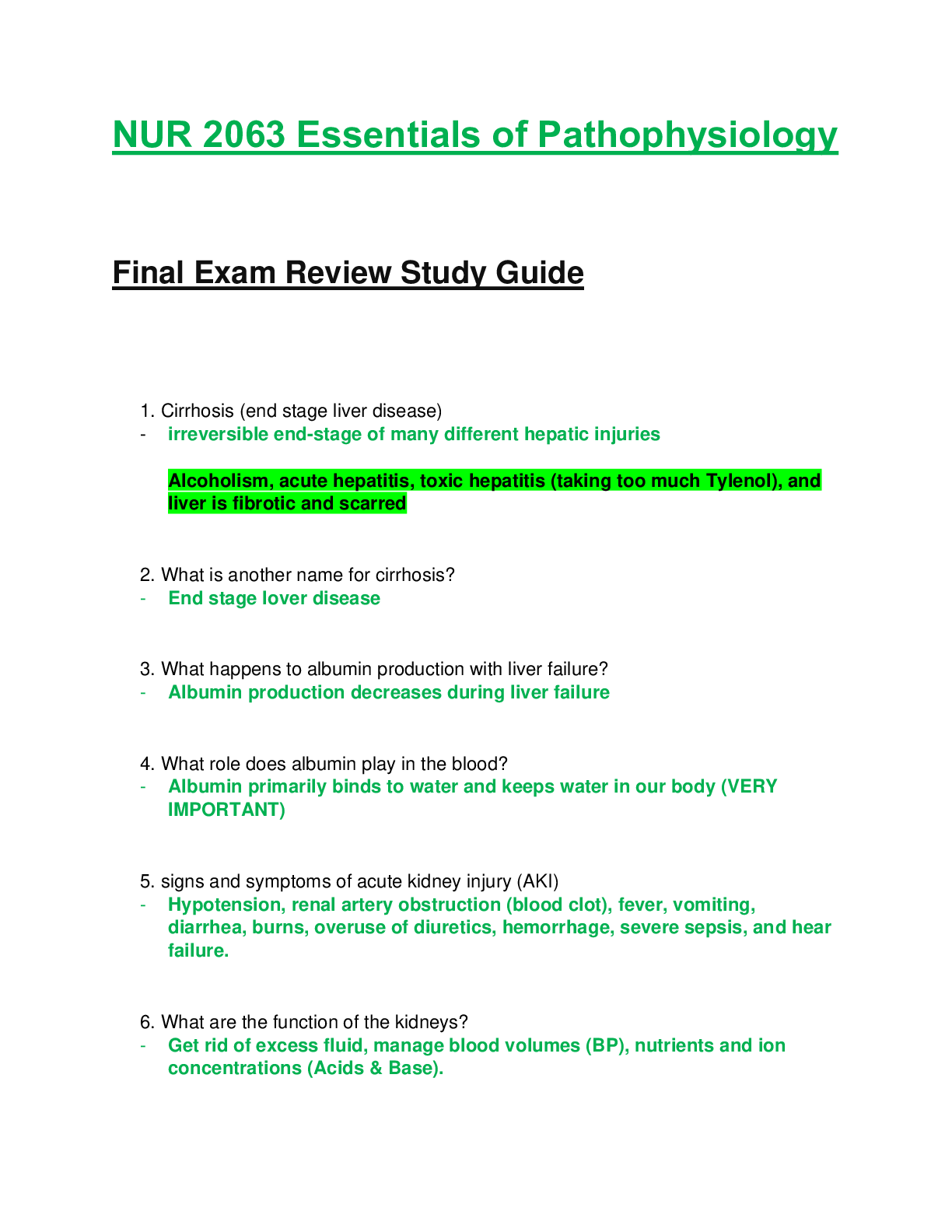
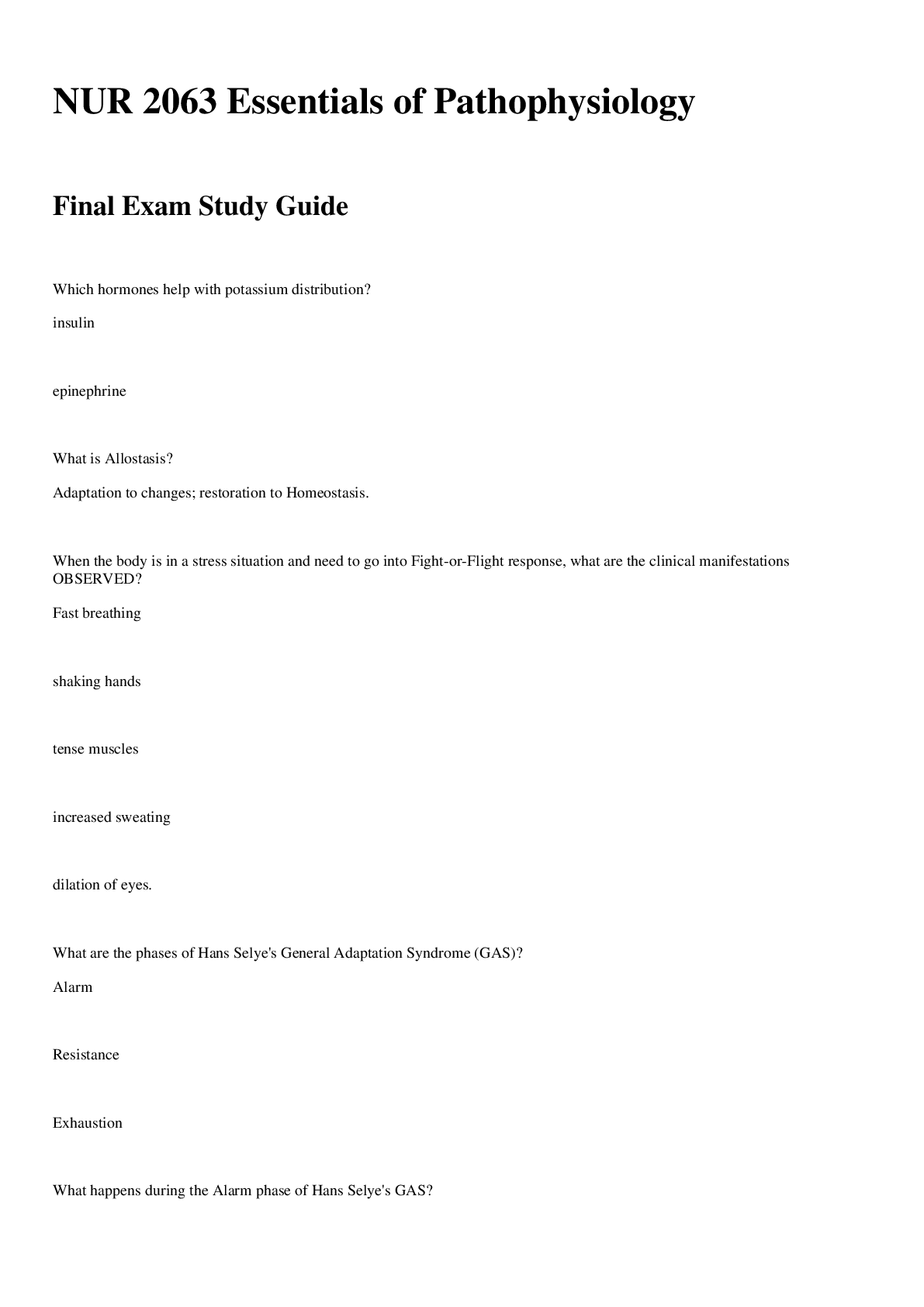

.png)
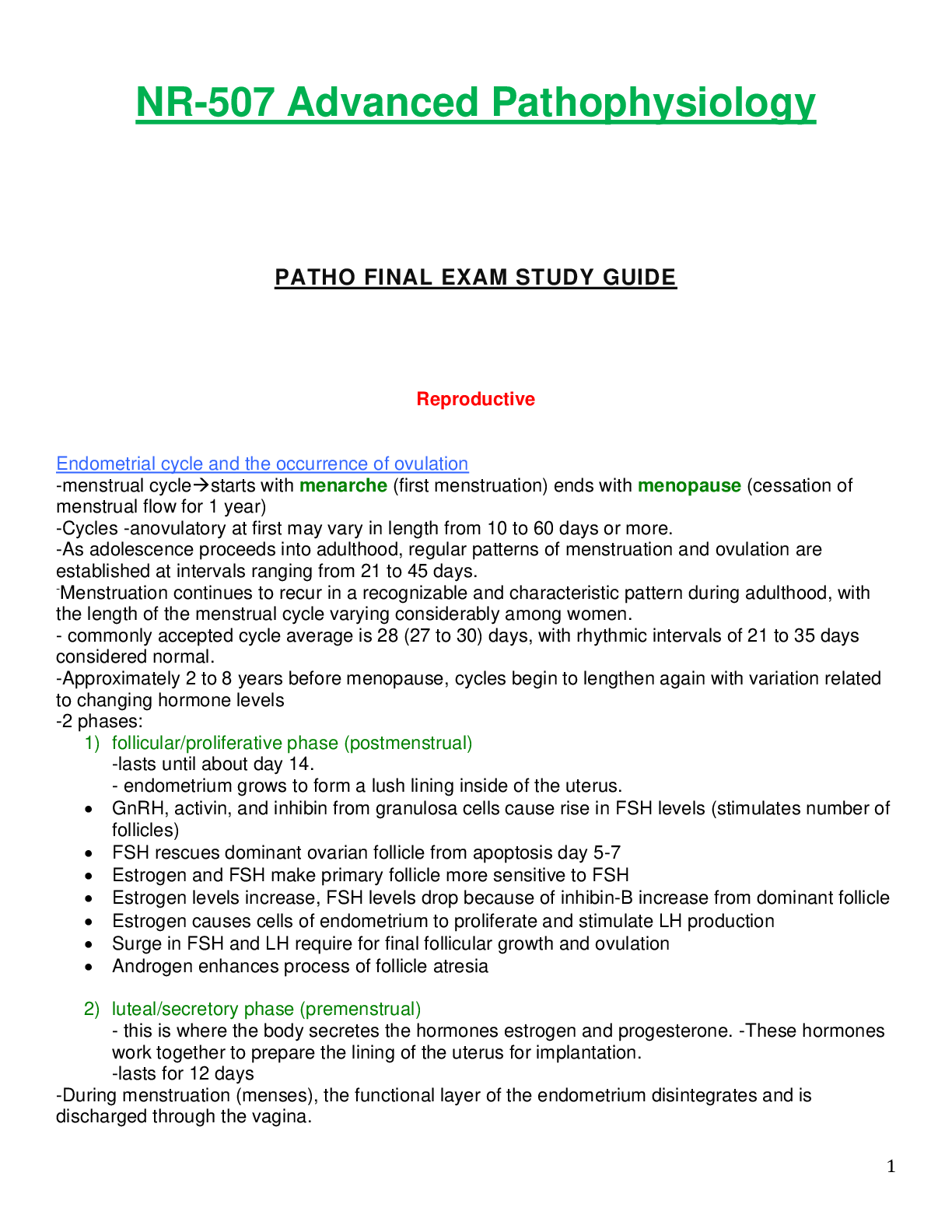

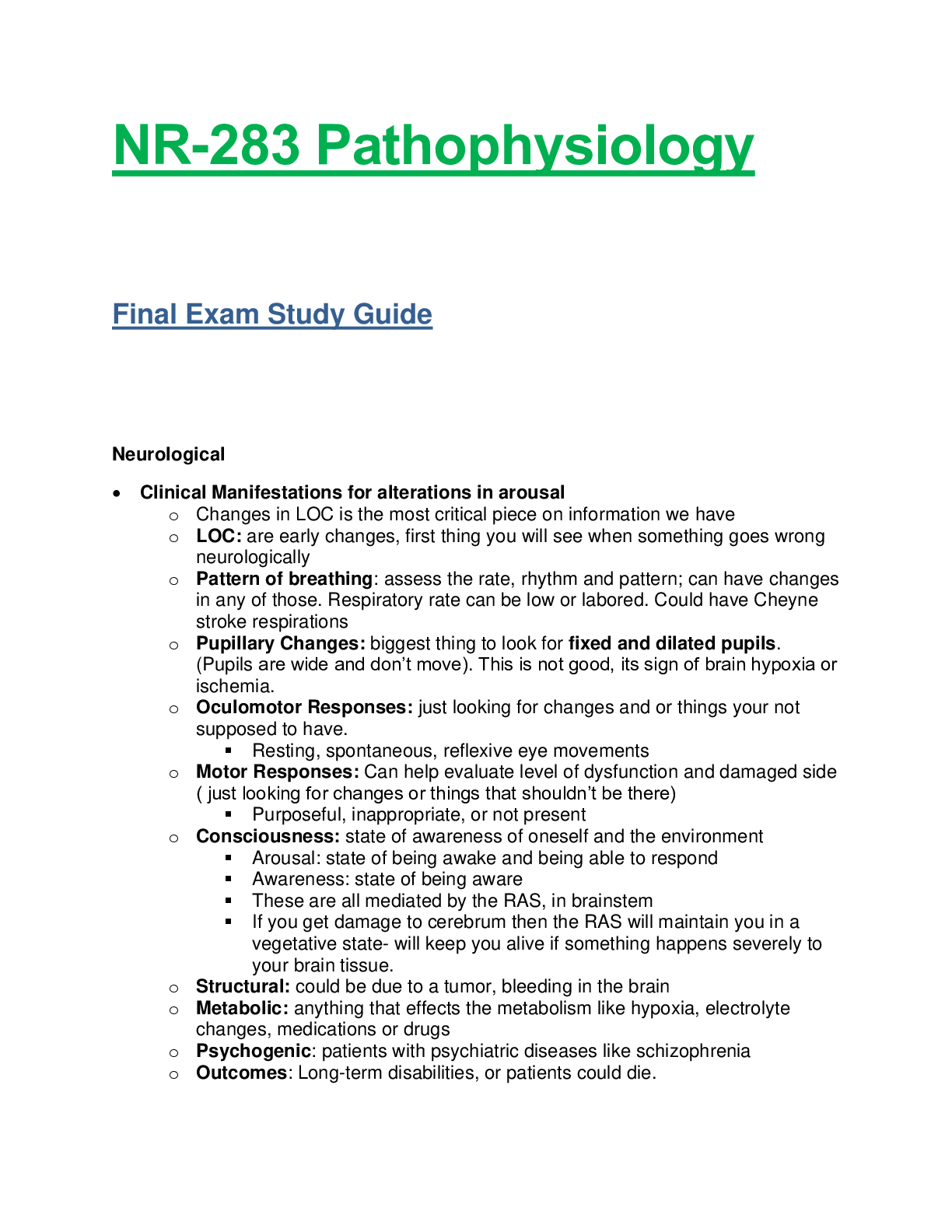
 J21.png)


